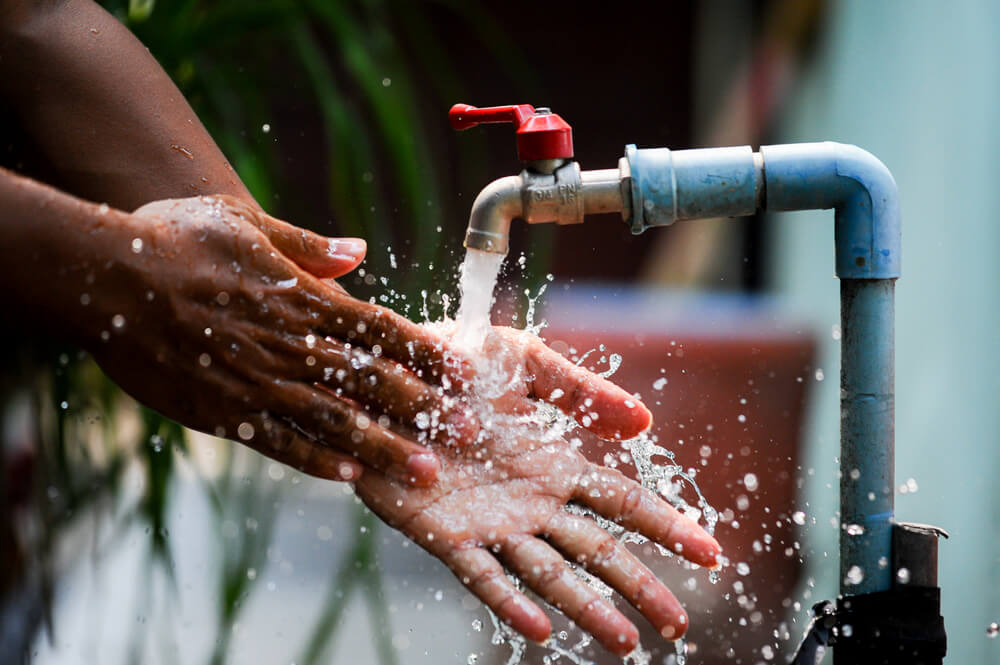As India commemorated the spirit of independence on the 74th Republic Day, we showcased our immense pride in the growth trajectory across various sectors in our parade. While we have significant developments to be proud of, we are also aware of the burgeoning population.
This kind of growth will mark a new phase entwined with the challenges of looking beyond the numbers to meet the shared responsibility and to bridge the gap between urban and rural areas while protecting the people and planet by achieving the UN sustainable development goals.
Jal Jeevan Mission, the world’s largest drinking water project envisaged by the Prime Minister to bring piped water supply to all rural households of the country by 2024, was a promise which needed extreme capacity, innovation, and most importantly, the intention of delivering results. When the programme was launched almost 3.5 years ago, out of 18 crore rural households, only 3 crore rural households had a tap water connection. With the clock ticking and crucial time lost in the Covid pandemic, many believed it to be an over-ambitious and nearly impossible project. Today, over 11 crore rural families in the country have a functional household tap connection.
While we are proud of the milestone, we cannot afford to pause and celebrate. We must maintain the momentum of installing tap water connections while ensuring community ownership. The mission is not just about laying out water supply infrastructure. Unlike past government schemes, tap connections are not just a utility, but also asset creation. Therefore, it needs a robust operation and maintenance policy that addresses the five concerns of quality, quantity, continuity of the scheme, and ensuring the last mile reach.
The scale is humongous, so we need speed to achieve the goal in a timely manner without compromising on quality. Moreover, sustainability should not be overlooked. There is an urgent need to develop a live compendium of success stories using participatory tools for behaviour change and community empowerment.
Under the green strategic partnership with the Government of Denmark, the United Nations Office for Project Services (UNOPS) is providing strategic technical support to the Jal Jeevan Mission in 227 villages spread over 20 districts across 4 selected states, thereby improving the lives of approximately 5 million people, ensuring that ‘No One is Left Behind’, and empowering the lives of 2 million women through training and education. The objective is to transform them into model villages.
We have invented two participatory approaches, namely, Community Leave No One Behind (CLNOB) for behaviour change, and Rapid Action Learning (RAL) to capture learning and sharing of best practices in Jal Jeevan Mission.
We have piloted CLNOB in the most water-stressed districts of four states to trigger a collective understanding of the current status, challenges, and possible solutions for drinking water supply, grey water management, and sanitation practices in and around their households.
CLNOB inspires an emotion of agreement where no individual is left behind and everyone participates in the process to reap collective gains from the outcome. Since women deal with water issues in the family, they are involved in the programme from the very beginning and are encouraged to participate in the mapping process and share their concerns proactively. This reflects an impact in increased women representation across 137 Village Water & Sanitation Committees (VWSC). 700 women are trained to conduct water quality tests and they have tested 100% drinking water sources in their villages, shared ways to mitigate the problem, and escalated findings to the district authorities where required.
While implementing the mission, it is also important to revisit the learning drawn at every level. All over the country, there have been mass drives targeting the goals of the mission, but at various levels of implementation, new approaches, techniques, and methods are being executed for sustainability. This is where the Rapid Action Learning (RAL) approach creates a platform to successfully share good as well as bad practices, so implementers know what works and what does not work on the ground, thus reflecting the scenario of a particular region. The workshop format intends to harvest learning from ongoing practices and innovations on the ground to make it available to a wide range of practitioners for their dissemination, application, and replication across different states and districts. The process has been designed to encourage and enable government practitioners to identify their good practices, innovations, and lessons learned, and share them in an open-ended manner, laterally and peer-to-peer, drawing practical lessons from each other across states.
UNOPS has organized RAL at divisional, state, regional, and national levels under its WASH project. The National RAL organized on greywater management highlighted many new techniques to address the risks posed by greywater discharge to the environment and public health.
CLNOB mapping exercises highlighted that less than 1% of households had soak pits structures to efficiently dispose greywater, and RAL offered UNOPS a solution and opportunity to demonstrate community leach pits as a technology to manage greywater in 34 villages in 10 districts (Sonbhadra, Prayagraj, Mirzapur, Lalitpur, Kaushambi, Jhansi, Jalaun, Hamirpur, Chitrakoot and Banda) of Uttar Pradesh.
Approximately 576 households have benefitted from the community leach pits. The community was enthusiastic regarding leach pits and approximately 73% of the leach pit funds were leveraged through community contribution. This also inspired community ownership of the structure and increased climate resiliency.
Both CLNOB and RAL techniques act as accelerators in the progress towards Har Ghar Jal by 2024 ensuring community participation and ownership for long term sustainability.
Additionally, as a step towards green energy transition, UNOPS has also facilitated the construction of a solar-energized water pumping system to considerably reduce the electricity consumption for the overhead tank supplying clean drinking water to the household tap connections in Mirtala village of Mahoba District, Uttar Pradesh.
This village was selected for this green technology innovation as it has achieved most of the WASH indicators to become a model village. All 161 households in Mirtala have 100% functional tap water connections and each household has a private toilet. With the unit, a total of 161 households with a population of 1016, Anganwadi centre, Panchayat Ghar, and schools are being provided with potable drinking water through this water project, hence bringing down the energy consumption by nearly 75%. The dual water supply system was handed over to the village water and sanitation committee (VWSC) for operation and maintenance and to sustain it for the welfare of all.
We have the spirit, we have the force, and with the right approach, we shall definitely create model WASH (Water and Sanitation) enlightened Indian villages for the world to see and learn.



